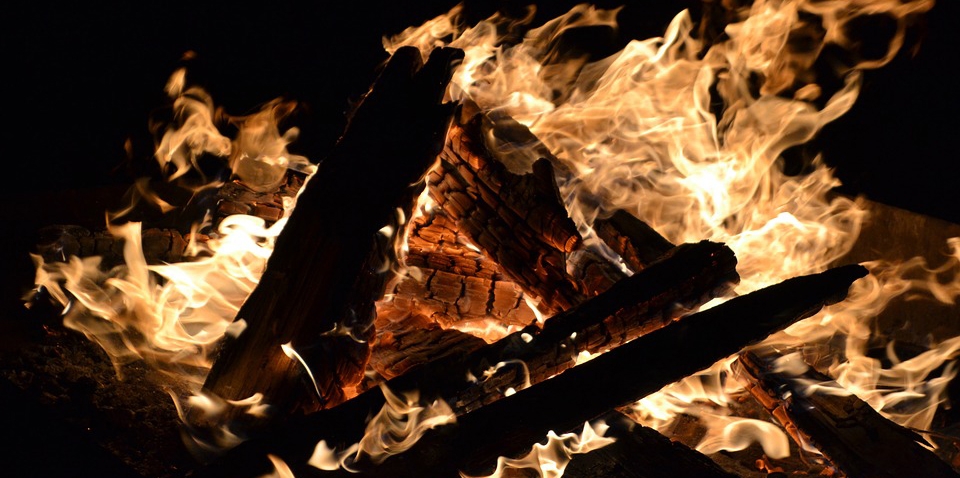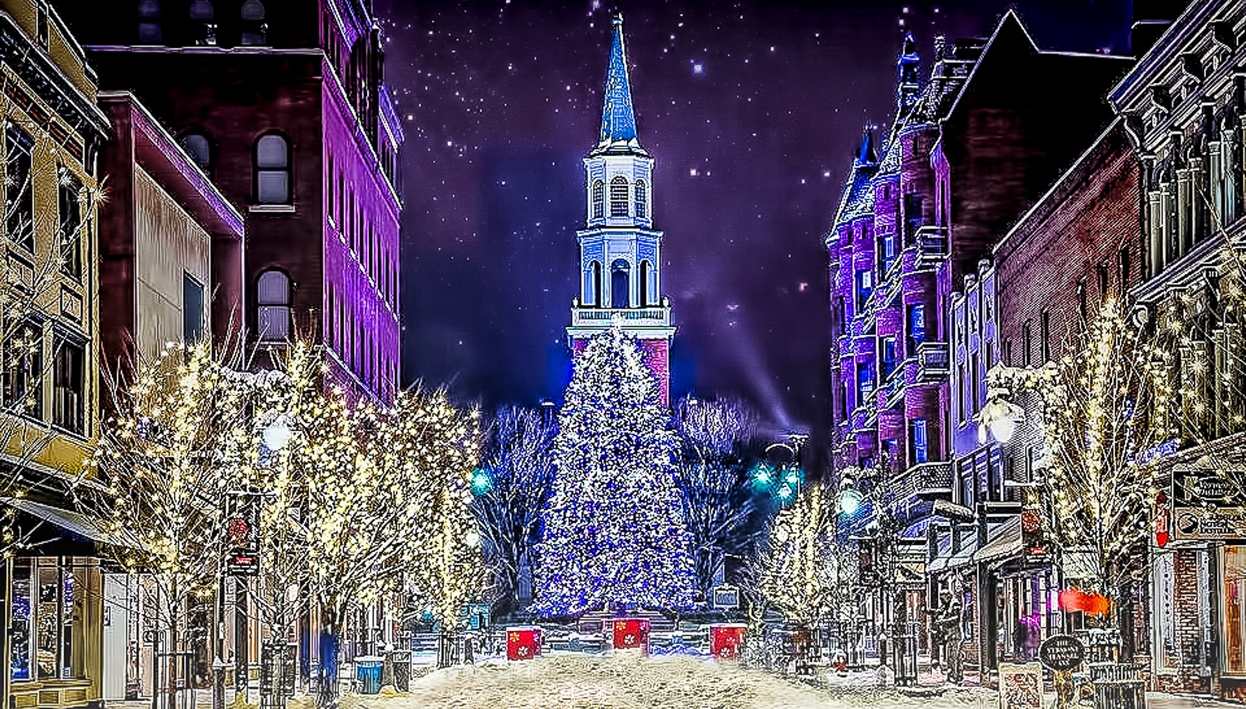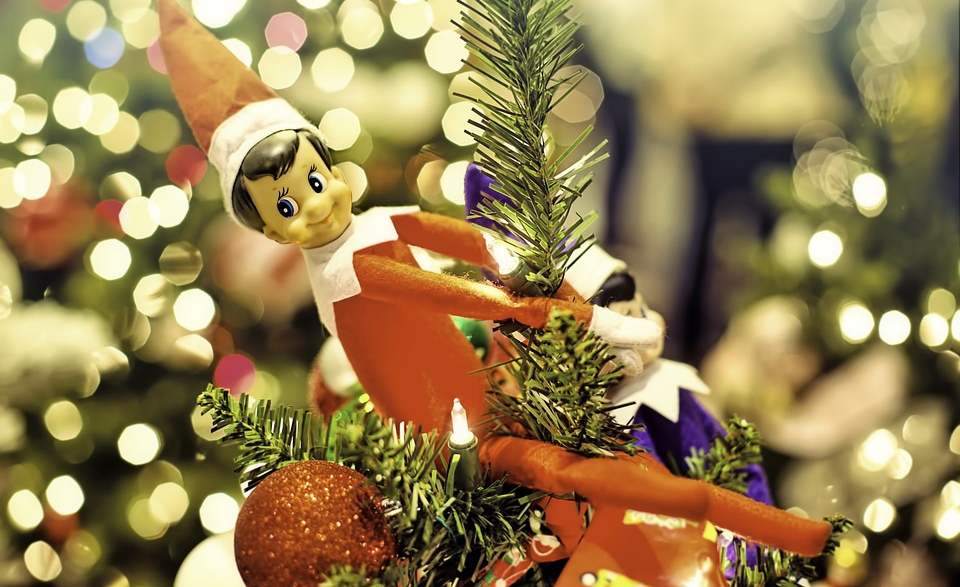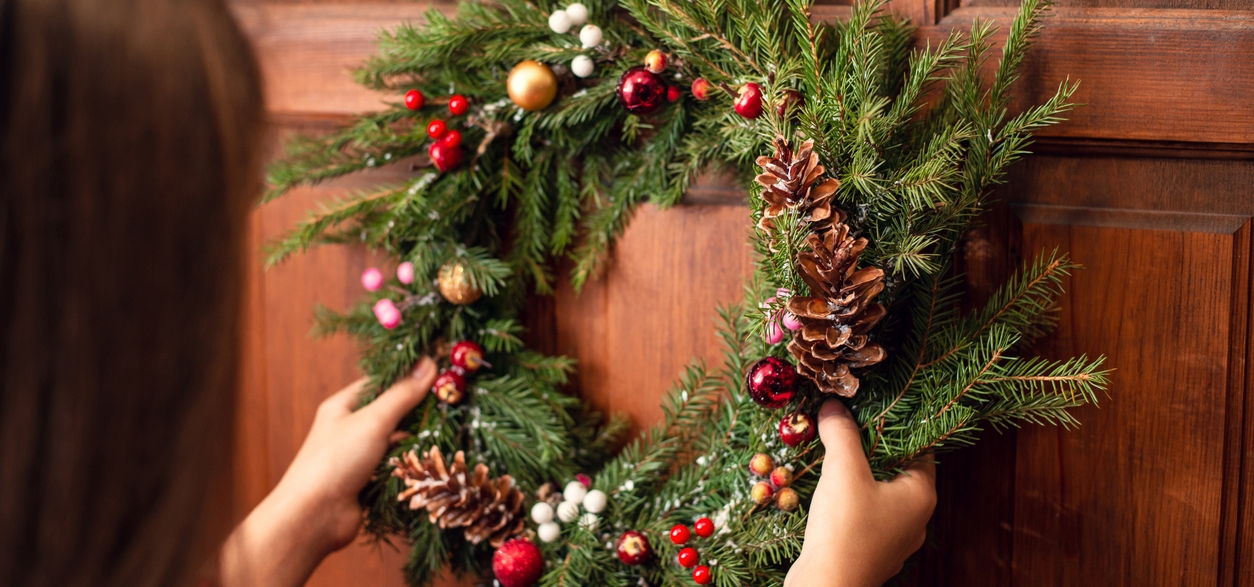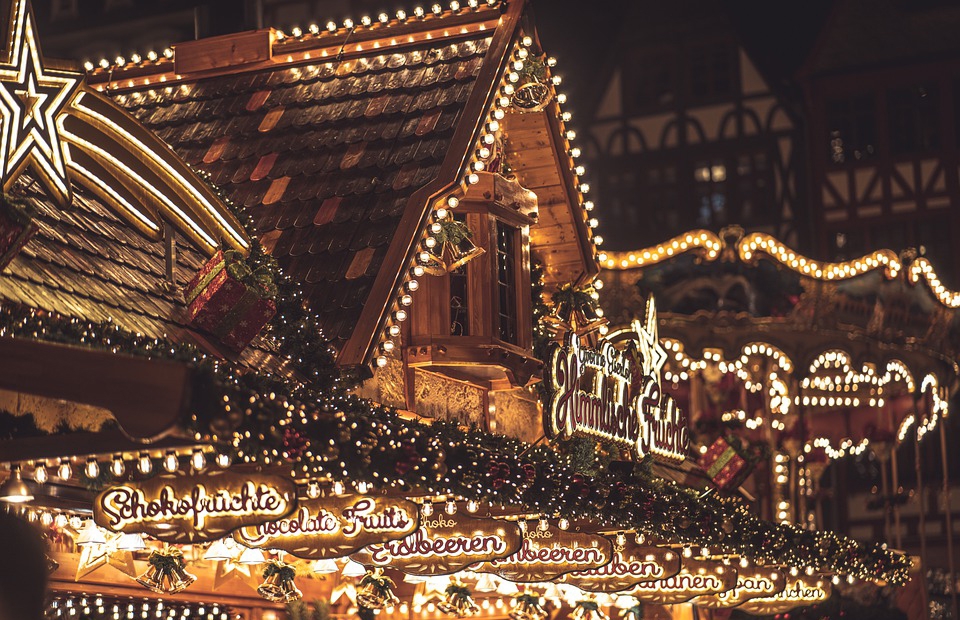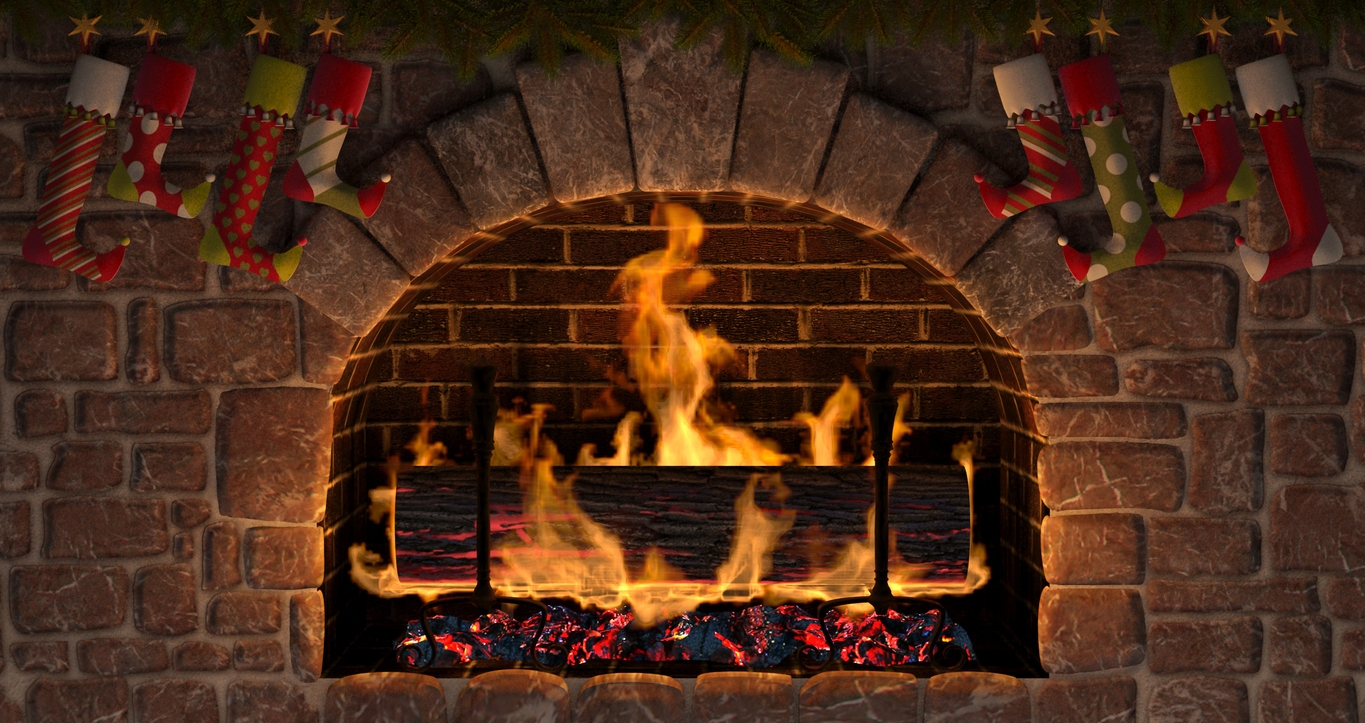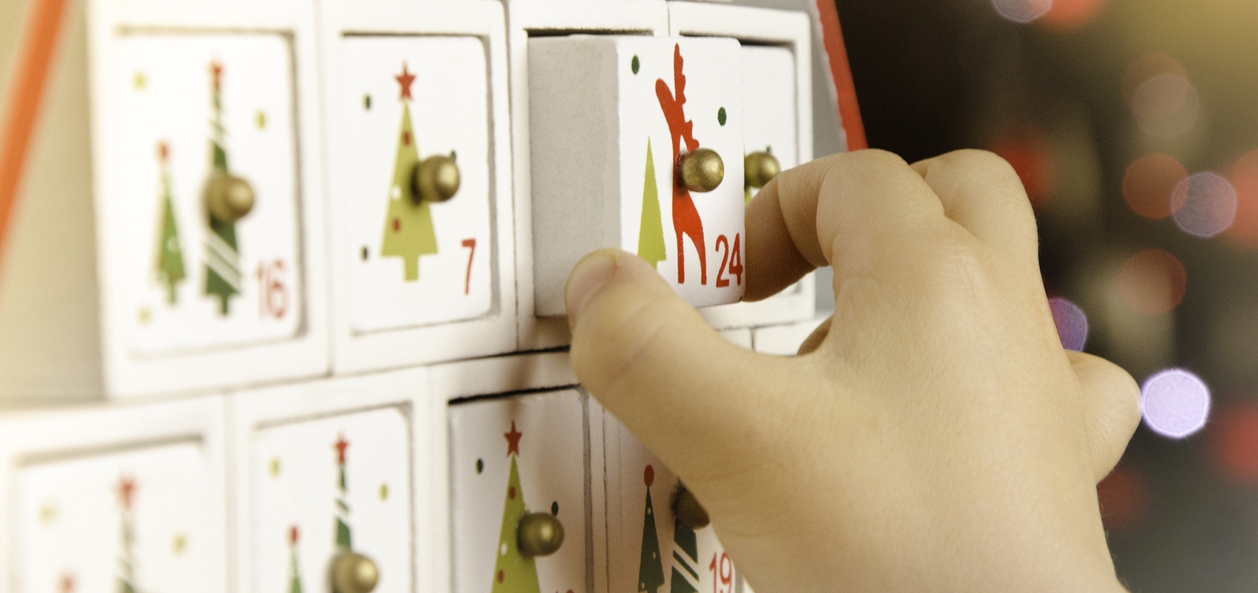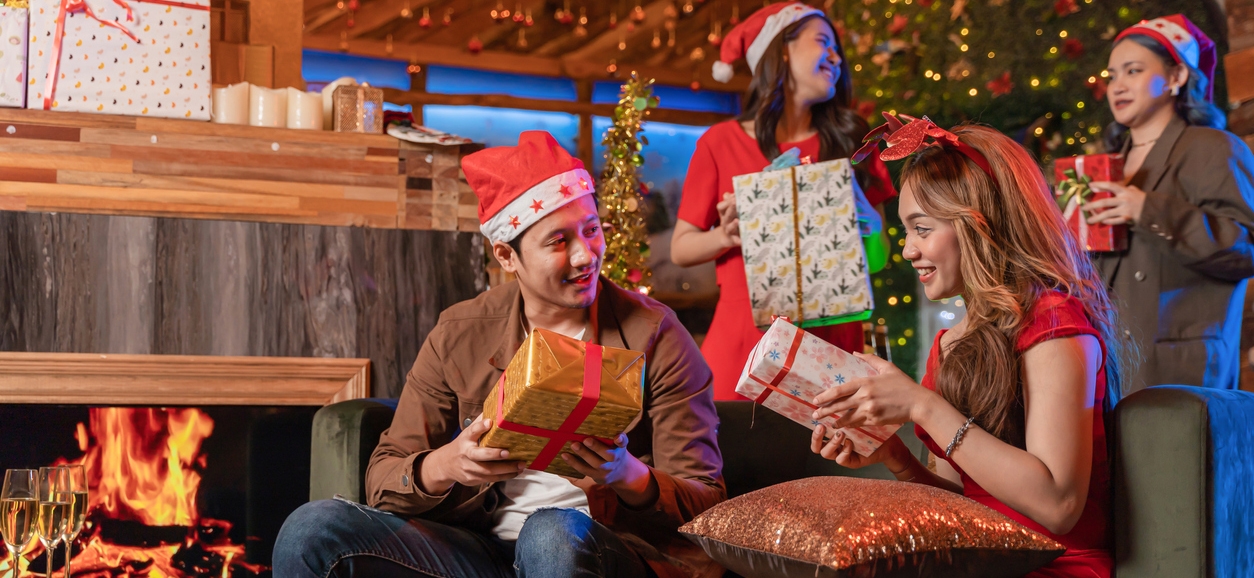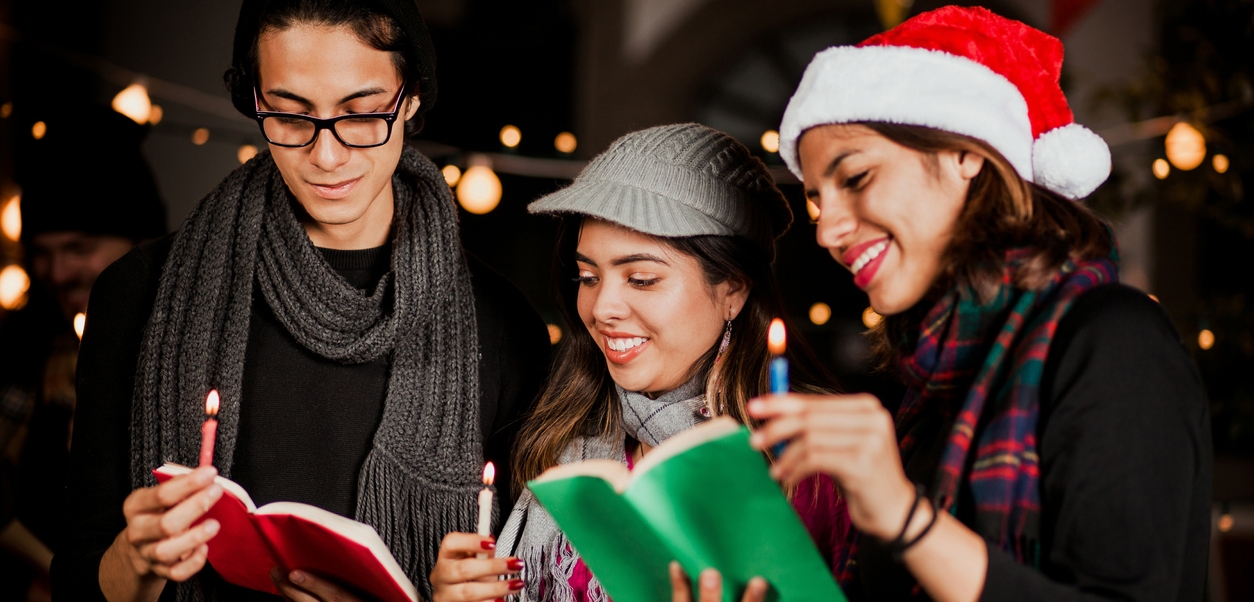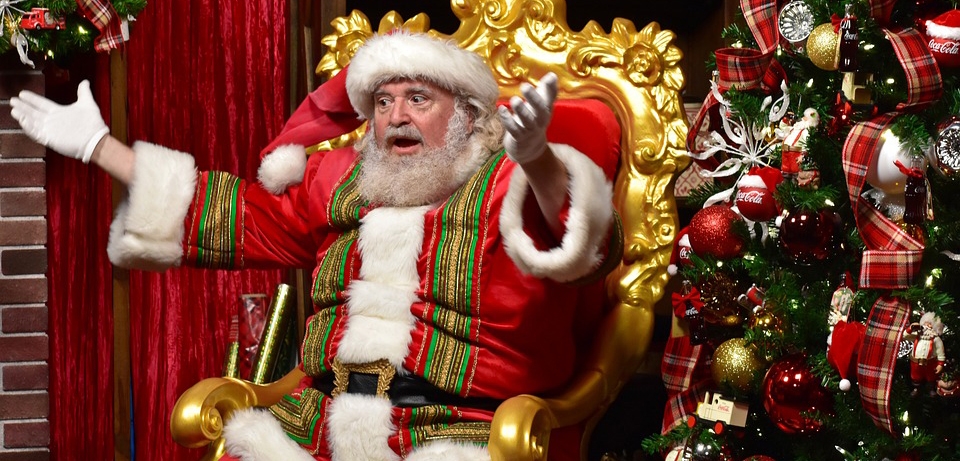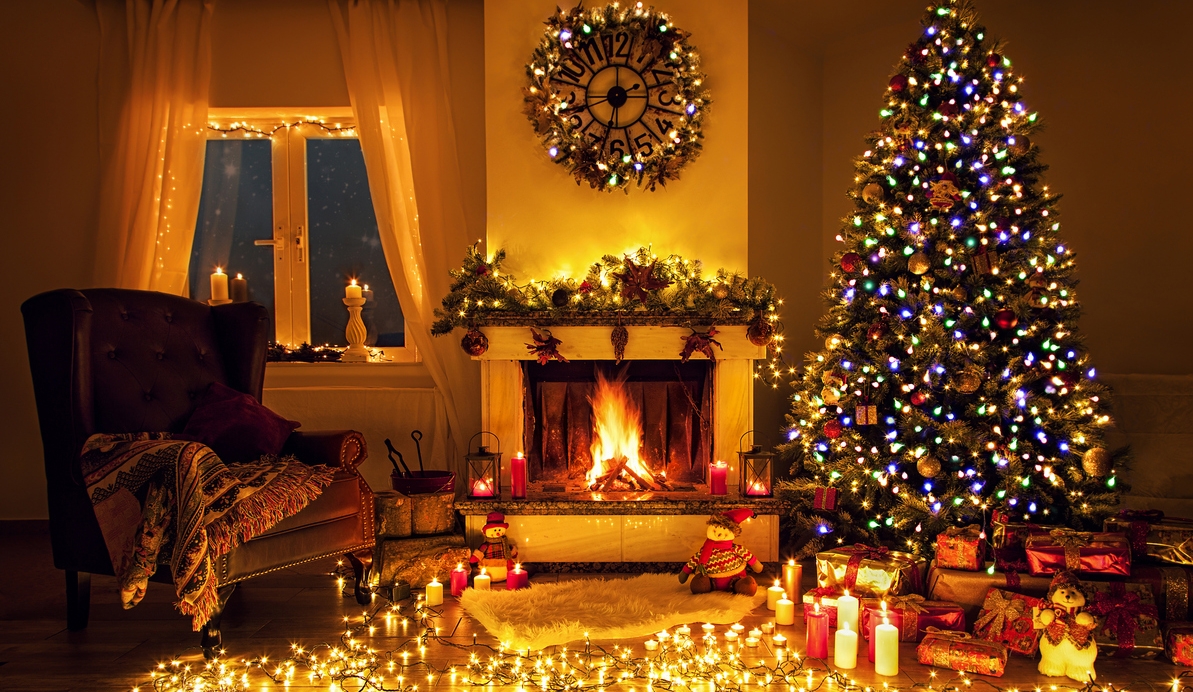Background
Among the many holidays that most people look forward to, Christmas is one of the most popular. For a lot of people, Christmas is the time to give gifts to family and friends, decorate Christmas trees, attend church, cook delicious meals, and have family reunions. It is also a very popular holiday for kids, as many of them believe that their wishes are granted by Santa Claus every Christmas.
Each year on December 25, people celebrate Christmas. It is a holy religious holiday as well as a global cultural and economic event. People all throughout the world have been celebrating Christmas with customs and rituals that are both religious and secular in origin for many years. Christians commemorate Christmas Day as the birth anniversary of Jesus of Nazareth. [1] If you have been celebrating Christmas by doing the traditions we mentioned earlier, have you ever wondered how those practices started? Where do you think our modern Christmas celebrations originated?
If you have the same questions in mind, you’re in the right place. In this post, we are going to give you more information about the origins of our modern Christmas celebrations.
Where Did the Word “Christmas” Come From?
There are billions of individuals who celebrate Christmas, each in their own unique way. Each country also has a slightly different name for Christmas. But from where precisely does the word “Christmas” originate? The truth is that the word we use today for the popular holiday is quite new. The English term comes from the words “Christ” and “mass,” based on the Britannica Encyclopedia. “Christ” came from the Greek word “Christos,” which is from the Hebrew meaning “Messiah.” In Judaism, the Messiah is the name of the expected king meant to deliver the Jewish nation. [2]
Numerous other names for the festival have also been used. Before Christmas, Yule was used, and it likely had to do with the feast that occurs during the winter solstice, which is not connected to the birth of Jesus. [2] There are also some words for “Christmas” in other languages that are connected to the birth of Jesus. One of them is the word “Natividad,” which is thought to be related to nativity, as is the word Natale.
The Origins of Christmas
Celebrations Before the Arrival of Jesus
Around the world, the middle of winter has long been a time of celebration. Hundreds of years before the arrival of Jesus, early Europeans celebrated light and birth in the darkest days of winter. When the worst of the winter was through, and they could look forward to longer days and more hours of sunlight, many people celebrated the winter solstice.
Saturnalia, a pagan holiday, was observed from December 17 until December 23. It included the winter solstice and celebrated the Saturnian god. People exchanged gifts, played games, drank alcohol, and bet during this event. [1]
The Norse in Scandinavia celebrated what they called “Yule” from December 21, the winter solstice, through January. It was celebrated in recognition of the return of the sun. Large logs were brought home by fathers and sons, which they would set on fire. Until the log burned out, the people would feast, which could take as long as 12 days. They thought that each fire spark symbolized a pig or calf that would be born in the upcoming year. [1]
In most areas of Europe, the end of December was the perfect time to celebrate. During that time, most cattle were slaughtered so that they would not have to be fed during the winter. For a lot of people, it was the only time of the year when they had a supply of fresh meat. In addition to that, most beer and wine made during the year were finally fermented and ready to drink.
In Germany, the pagan gold Oden was honored by people during the mid-winter holiday. Germans feared Oden because they thought he flew at night to watch people and select who would live and who would die. Due to this belief, many of them preferred to stay inside.
Origin and Development of the Christmas We Know Today
The early Christian community distinguished between the identification of the date of the birth of Jesus and the liturgical celebration of that event. The actual observance of the day of birth of Jesus was long in coming.
During the first two centuries of Christianity, there was strong opposition to recognizing the birthdays of martyrs, or for that matter, of Jesus. Many Church Fathers made scathing remarks regarding the pagan practice of celebrating birthdays while, in reality, the church believes that martyrs and saints should be commemorated on the days of their martyrdom, which is their real birthday. [3] The exact origin of the date December 25, as the birth date of Jesus, is unclear. There is also no single clue in the New Testament about this date.
In 221 AD, historian Sextus Julius Africanus first identified December 25 as the date of the birth of Jesus. [3] During the start of Christianity, the main holiday was Easter and the birth of Jesus was not celebrated. The canonical date for Christians to celebrate the birth of Jesus was set by Pope Julius I on December 25 in the fourth century, which brought about a change in tradition. The reasons for the move are still up for discussion, but it is generally agreed that December 25 was chosen to maximize the possibility that Christians around the world would prefer the celebration to pagan traditions that were already observed at the time. [4]
Christmas had spread to Egypt by 432 AD. When the Middle Ages came, the practice of celebrating Christmas spread throughout different parts of the world, and it replaced pagan festivities. It continued to spread in the following centuries. From that point forward, people began celebrating the birth of Christ on December 25 and the Feast of the Epiphany, which honors the moment the wise men arrived in Bethlehem and discovered Jesus in the manger on January 6. The period of time between these dates would become known as the 12 days of Christmas. [4]
Introduction of Christmas in the United States
Religious reforms were gaining speed by the 17th century, which also affected how Christmas was celebrated. Christmas was canceled by Oliver Cromwell and the Puritans, and it did not return until Charles II returned to the throne. In 1620, when the Pilgrims came to North America, they did not bring Christmas with them. In fact, Christmas was forbidden in Boston from 1659 until 1681. The Americans did not want to embrace anything British. That’s why they declined to celebrate Christmas after the American Revolution. This means that in the United States, Christmas was not a federal holiday until June 26, 1870. [4]
After then, Americans would continue to adopt and modernize the Christmas customs that immigrants had brought to the country as well as welcome new customs from other countries, such as the Christmas tree, which helped shape the customs of the holiday into what we know and love today.
How Did The Christmas Celebrations We Know Today Start? |
|
| Date | Event |
| 5th Century BC | Before Christmas became known as the birth of Jesus, a pagan festival called Saturnalia was celebrated from the 17th to the 23rd of December. It honored the god of Saturn and encompassed the winter solstice. During this festival, people gave gifts to one another, played games, got drunk, and gambled. |
| 221 AD | Sextus Julius Africanus, a historian, first identified December 25 as the date of Jesus’ birth. Eventually, it was chosen by Pope Julius I as the official birth date of Jesus to be celebrated by Christians. |
| 432 AD | The celebration of Christmas had spread to Egypt. It was first known as the Feast of Nativity. By the end of the 6th century, the custom reached England. |
| 9th Century | A particular liturgy was used to commemorate Christmas as it became more popular. It did not, however, reach the liturgical status of either Good Friday or Easter. Roman Catholic churches celebrated the first Christmas mass at midnight, and Protestant churches have increasingly held Christmas candlelight services late on the evening of December 24. |
| 1605 | During this time, fir trees decorated with apples were first known in Strasbourg, in eastern France. However, there is some uncertainty about the exact date and origin of the tradition of the Christmas tree. |
| 1611 | The first use of candles on decorating trees is recorded by a Silesian duchess. |
| 1620 | English separatists, referred to as the pilgrims, came to America. They were even more orthodox in their Puritan beliefs than Cromwell. With this, Christmas was not a holiday in America. |
| 1645 | Oliver Cromwell and his Puritan forces took over England and vowed to rid England of decadence. As part of their effort, they also canceled Christmas. |
| 1659-1681 | The celebration of Christmas was outlawed in Boston. Anyone seen exhibiting the Christmas spirit was fined five shillings, which is equivalent to a penny today. |
| 1819 | A best-selling author named Washington Irving wrote The Sketchbook of Geoffrey Crayon, gent., a series of stories about the celebration of Christmas in an English manor house. |
| 1822 | Episcopal minister Clement Clarke Moore wrote a Christmas poem called “An Account of a Visit from St. Nicholas,” more popularly known today by its first line: “‘Twas The Night Before Christmas.” The poem depicts Santa Claus as a jolly man who flies from home to home on a sled driven by reindeer to deliver toys. |
| 1828 | The New York city council instituted the city’s first police force in response to a Christmas riot. This catalyzed certain members of the upper classes to begin to change the way Christmas was celebrated in America. |
| 1841 | Prince Albert began the lasting tradition of putting Christmas trees from town squares to living rooms. |
| 1843 | With the introduction of the Penny Black stamp, sending friends and distant family a Christmas card was first introduced in England. |
| 1870 | Christmas was declared a federal holiday in the United States on June 26, 1870. |
| 1881 | The iconic version of Santa Claus as a jolly man in red with a white beard and a sack of toys was immortalized when political cartoonist Thomas Nast drew on Moore’s poem to create the image of Old Saint Nick we know today. |
| Mid-19th Century – Present | Many Christmas traditions of Europe and America were not defined until the mid-19th century. They were also not deemed to be particularly important until many years later. What most of us look forward to at Christmas celebrations at the present time, such as caroling, tree decorating, and card giving, were solidified during the 19th century throughout Europe and America. |
The Origins of Different Christmas Traditions
As we’ve mentioned earlier, the celebration of Christmas involves many traditions. Some of the most popular ones are giving gifts, decorating trees, making gingerbread houses, and more. But have you ever wondered where these traditions originated from or how they started? If you are also curious about these, below are the origins of different Christmas traditions.
Christmas Trees
One of the symbols that Christmas is just right around the corner is when we see a decorated Christmas tree at home. The Middle Ages in Germany are when decorated trees first appeared. It was in the 19th century when German, and other European settlers popularized Christmas trees in the United States. In 1851, a New York woodsman named Mark Carr was credited with opening the first Christmas tree lot in the US.
At the present time, Christmas trees are very popular. Based on a 2019 survey done by American Christmas Tree Association, around 77% of households in the United States displayed a Christmas Tree in their home. Among the trees used, about 81% were artificial and 19% were real. [5]
Elf on the Shelf
A special scout is dispatched to your home from the North Pole as part of the Christmas custom known as “Elf on the Shelf” to motivate children to behave. The idea behind it is that Santa’s little helper watches the kids by day, and every night, it goes back to the North Pole to report on whether they were naughty or nice. There are two rules behind this tradition. One is that the kids are not allowed to touch the elf, or it will lose its magic, and the second one is that the elf will not speak or move while the kids are awake. [6]
From Thanksgiving till Christmas, many parents have been hiding a toy elf every night, either willingly or reluctantly. Since Carol Aebersold and her daughter Chanda Bell wrote the book “Elf on the Shelf: A Christmas Tradition” in 2005, more than 13 million elves have been “adopted.” [5]
Door Wreaths
Since ancient Greek and Roman times, wreaths have been around. However, the evergreen Christmas wreath, which is mostly adorned with boughs of holly, eventually took on Christian meaning. The holly leaves and berries are a representation of the crown of thorns and the blood of Christ, and its round form stands for perpetual life. At the present time, there are many different types of wreaths, which are adorned with flowers, fruits, glass balls, and ribbons. They are often seen as a secular winter tradition. [5]
Christmas Lights
In 1882, Edward Hibberd Johnson came up with the idea of stringing bulbs around a Christmas tree in New York. When 1914 came, these lights were being mass-produced. Today, around 150 million sets of lights are being sold in the United States each year. [5]
Poinsettias
Poinsettias are known as America’s Christmas flower. They are native to Central America and were brought to the US by the first US ambassador to Mexico, botanist Joel Roberts Poinsett, back in the 1820s. After 100 years, a California horticulturist named Paul Ecke brought the traditional red and green plants to the masses by donating the plants to TV shows. By 1986, the poinsettia became the best-selling potted plant in the nation. [5]
Yule Log
Yule logs were part of the ancient winter solstice celebration. However, the Americans turned the wood burning into must-see TV. In 1966, WPIX-TV in New York aired a 17-second continuous loop of a fireplace for three hours, along with holiday music. This led to eventual better production and about 20 years of annual viewing. At the present time, the yule log can be viewed on demand and online. [5]
Advent Calendars
A picture appropriate for the season is shown when a small numbered flap on an advent calendar is lifted on each day of the season. It is something that helps in counting down the days until Christmas. This custom’s first versions date back to 1903 in Germany. A publisher named Gerhard Land offered a way for kids to countdown to Christmas by opening one door or window a day to reveal a Bible passage, small gift, or poem.
In 1920, Advent Calendars gained mass popularity and evolved into secular calendars that include daily gifts from small bottles of wine to chocolates to nail polish to action figures. [5]
Gingerbread Houses
Even though Queen Elizabeth I is credited for the early decorating of gingerbread cookies, it was the Germans who claimed to start the tradition of making gingerbread houses. The tradition was born in 1812 when the German Brothers Grimm wrote “Hansel and Gretel.” At the present time, these edible decorations can be bought in a slew of pre-packed kits. [5]
Gift-Giving
The tradition of gift-giving during Christmas has its roots in pagan rituals held during the winter. However, when Christianity incorporated these customs into Christmas, the Three Wise Men—who delivered presents to the baby Jesus—were cited as the reason for presenting gifts. However, in early modern Europe, gift-giving also had its roots in Christmas begging, which bore little resemblance to the family-centered holiday celebrated today.
Back then, bands of young men during the holiday seasons would “wassail” from home to home, often rowdy, and would demand handouts from the gentry. The social classes exchanged gifts over Christmas. However, as Christmas became domesticated in the United States in the 1800s, children began to receive gifts instead of members of the lower classes from Santa Claus-like figures. [7]
Caroling
Christmas caroling also has its roots in pagan rituals appropriated by the nascent Christian Church in the 4th century when it officially named Christmas the celebration of the birth of Jesus. Liturgical songs were the first carols, with little in common with the Christmas carols that we are familiar with today. Early Europe’s practice of “wassailing” also gave rise to the door-to-door phenomenon of caroling. However, it was rejected as a sin by the Puritans as it was connected with heavy drinking and rowdiness.
In the Victorian Era, the peaceful, “modern” singing of Christmas hymns arose either in church or on the streets and became popular. It was during this period when “Hark! The Herald Angels Sing,” “God Rest You Merry, Gentlemen,” and “The First Noel” were popularized. [7]
Santa Claus
During the Christmas season, Santa Claus is among the most popular characters, especially for kids, as they believe the gifts that they receive are from him. The origins of Santa Claus can be traced back to what is now Turkey, to legends surrounding St. Nicholas, a monk. Respected for his kindness, he became popular as the protector of children. However, the modern Santa that we know today, whose name came from the Dutch “Sinterklaas,” came later.
Christmas was a time of disorderly partying at the turn of the 19th century. In the early 1800s, a member of the New York Historical Society named John Pintard attempted to take Christmas by introducing St. Nicholas to the United States. About the same time, the figure was popularized by Washington Irving with his “A History of New York” in 1809. There, he mentioned St. Nick 25 times.
The image of Santa being jolly came from the 1882 poem “An account of a visit from St. Nicholas,” more popularly known as “Twas the Night Before Christmas,” which was written by Clement Clarke Moore. [7]
Interesting Facts About Christmas
Christmas is truly one of the holidays that many people are looking forward to. But there is so much more to learn about Christmas than the customs that are widespread and that most people are familiar with. If you are curious about these, below are more interesting facts about Christmas that you should know about:
- The first-ever Christmas card was designed by Sir Henry Cole, and it was sold at an auction for $6,846.
- The largest gingerbread house was made using 1,800 pounds of butter, 3,000 pounds of sugar, 7,200 eggs, 7,200 pounds of flour, and more than 22,000 pieces of candy. It is also as big as an actual house.
- In 2019, Universal Studios in Japan created the largest snowflake ornament ever seen, which stands more than 10 feet tall.
- More than 8.5 million lights are used each year during Christmas to decorate Walt Disney World.
- There are over 630 various kinds of Christmas trees, and 77 million of them are grown each year in the United States.
- All over the world, Santa Claus is known by more than 70 different names. In Brazil, he is called “Papai Noel,” and in “Julenissens” Norway.
- The Christmas song “Silent Night” is more than 200 years old. In fact, the version that we sing today is a translation.
- Not all Christians celebrate Christmas on the same day. In countries like Ukraine, Russia, and Romania, which have large populations of Orthodox Christians, Christmas Day is on January 7.
- Many people think that “Xmas” is just a modern-day abbreviation for Christmas. However, it actually dates back to the 16th century. The “X” is believed to represent the Greek letter “Chi,’ which is the first letter in the Greek word for Christ, Χριστός, pronounced “Christos.”
- You may be surprised to learn that “Jingle Bells” was not initially written as a holiday tune. It was written in 1850 with the title “One Horse Open Sleigh” for the American holiday, Thanksgiving.
- Coca-Cola played a part in the image of Santa Claus. Before Coca-Cola decided to use his image for advertising, he looked spookier than jolly. In 1931, Coca-Cola hired Haddon Sundblom, an illustrator, to depict the jolly old elf for magazine ads. Today, kids love Santa Clause and are not afraid of him.
- The tradition of hanging stockings or socks during Christmas began by accident. Based on legends, stockings are hung by the chimney with care due to a poor man who did not have enough money for his three daughters’ dowries. Generous old St. Nick dropped a bag of gold down in their chimney one night after the girls had hung their freshly-washed stockings there to dry. The gold ended up inside the stockings, and the tradition stuck.
- Fewer people think of Christmas as a religious holiday these days. In fact, based on the Pew Research Center, only 51% of people who celebrate attend church as part of the festivities.
- Based on the National Retail Federation, Americans spend nearly $1,000 on gifts every Christmas.
- Spiral-cut ham is the most popular choice for a Christmas table.
- Candy canes became a popular Christmas candy in 1847 when a German-Swedish immigrant decorated his tree with them.
- In the year 1836, Alabama became the first state in the United States to recognize Christmas as a legal holiday.
- In Poland, spider webs or spiders were considered signs of good spirit during Christmas. They believed that a spider created a blanket for the infant Jesus. Since then, they have believed that it is good luck and good spirit when there is a spider in their houses.
- In Japan, it is a tradition to eat KFC for Christmas. In fact, a lot of people in Japan follow this, that you have to place your orders two months in advance.
- Christmas trees usually grow for around 15 years before they can be sold.
- The origin of Rudolph the Red-Nosed Reindeer was an advertising gimmick for Montgomery Ward in 1839.
- Every year, 1.6 billion Christmas cards are purchased by Americans.
- During the Christmas season, Visa cards are used about 6,000 times every minute.
- In the early 1900s, Christmas lights were so expensive that they used to be rented rather than sold. This means that back in those times, an electrically lit tree was a status symbol.
- In 1539, the first Christmas was celebrated on American land in Tallahassee, Florida. During that time, there were no trees or presents, just a religious mass.
Conclusion
Christmas is truly one of the best days that people look forward to as each year draws to an end. Millions of people around the world are always excited to put up sparkling decorations and colorful lights, wrap special gifts, serve delicious foods, and spend time with loved ones. With all of these traditions and celebrations, it is quite difficult to imagine the times when Christmas was not yet celebrated by people. Can you imagine a year without Christmas? That’s quite sad, right? But thankfully, the tradition of celebrating Christmas started. It gave people an exciting event to look forward to every year. We hope this post helped you learn more about the origins of our modern Christmas celebrations.
References
[1] History.com, E. (2009, October 27). History of Christmas. History.com. Retrieved August 31, 2022, from https://www.history.com/topics/christmas/history-of-christmas#how-did-christmas-start
[2] Godlewski, N. (2018, December 25). Where does Christmas get its name? Newsweek. Retrieved August 31, 2022, from https://www.newsweek.com/christmas-word-name-where-1259923
[3] Hillerbrand, H. J. (2021, October 25). Christmas. Encyclopædia Britannica. Retrieved August 31, 2022, from https://www.britannica.com/topic/Christmas#ref284175
[4] Alcedo, M., & Gorman, C. (2022, June 16). Find out everything you need to know about the history of Christmas here. Country Living. Retrieved August 31, 2022, from https://www.countryliving.com/life/a45594/the-history-of-christmas/
[5] Kennedy, L. (2019, December 17). How 25 Christmas traditions got their start. History.com. Retrieved August 31, 2022, from https://www.history.com/news/christmas-traditions-history
[6] Khoo, I. (2019, December 4). How does elf on the shelf work? HuffPost. Retrieved August 31, 2022, from https://www.huffpost.com/entry/how-does-elf-on-the-shelf-work_n_610874fee4b0497e67026dd0
[7] Llana, S. M. (2013, December 21). Christmas: How did gift-giving and Caroling get started? The Christian Science Monitor. Retrieved August 31, 2022, from https://www.csmonitor.com/World/2013/1221/Christmas-How-did-gift-giving-and-caroling-get-started
[8] Madlani, P. (2022, February 6). 19 facts about Christmas that you didn’t know you wanted to know. BuzzFeed. Retrieved September 1, 2022, from https://www.buzzfeed.com/palakmadlani/19-fun-facts-about-christmas
[9] Kane, P. (2022, January 4). Facts about Christmas! National Geographic Kids. Retrieved September 1, 2022, from https://www.natgeokids.com/uk/discover/history/general-history/facts-about-christmas/
[10] Fogle, A., & Schumer, L. (2021, December 17). 35 Fun Christmas facts to share with your family. Good Housekeeping. Retrieved September 1, 2022, from https://www.goodhousekeeping.com/holidays/christmas-ideas/g2972/surprising-christmas-facts/
[11] C, T. (2021, November 8). 24 Fun Christmas Facts and information for kids. FirstCry Parenting. Retrieved September 1, 2022, from https://parenting.firstcry.com/articles/21-interesting-facts-and-information-about-christmas-for-kids/
[12] Berries, S. (2022, February 3). 45 amazing Christmas facts you need to know. Shari’s Berries Blog. Retrieved September 1, 2022, from https://www.berries.com/blog/45-fun-christmas-facts



